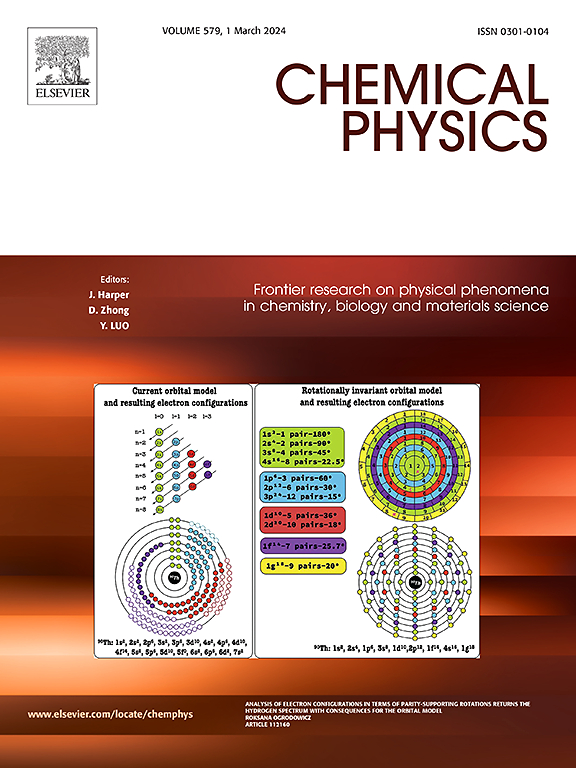Design and performance study of nitrogen-containing cuneane derivatives
IF 2
3区 化学
Q4 CHEMISTRY, PHYSICAL
引用次数: 0
Abstract
This study introduces nitrogen atoms into the cuneane based on the structural characteristics of β-HMX and ε-CL-20, forming a nitrogen-containing cuneane (CuneaneN) core structure. The compounds CuN-1 to CuN-8 are then designed by modifying the structure with -NO2 groups. The molecular structure, crystal density, oxygen balance, enthalpy of formation, detonation performance, and safety of these compounds are evaluated using density functional theory (DFT). The results show that as the number of nitro groups increases, the crystal density and enthalpy of formation gradually increase, while the oxygen balance initially increases and then decreases, which affects the detonation performance. Furthermore, the calculations reveal that as the number of nitro groups increases, the sensitization effect within the molecules strengthens, leading to an increase in impact sensitivity and a decrease in thermal stability. Among these compounds, CuN-5 exhibits the best performance (ρ = 1.93 gcm-3, Q = 1690.47 calg-1, D = 9.49 kms-1, p = 42.47 GPa, BDE of N-NO2 = 183.94 kJmol-1, BDE of C-NO2 = 279.42 kJmol-1, h50 = 9.55 cm). These findings indicate that the construction of nitrogen-containing cage molecules, combined with the modification of energetic groups, can lead to the design of high-energy-density materials with excellent performance and good safety.
含氮烷衍生物的设计与性能研究
本研究根据β-HMX和ε-CL-20的结构特点,将氮原子引入楔形烷烃中,形成含氮楔形烷烃(CuneaneN)核心结构。然后用-NO2基团修饰结构,设计了化合物cu -1 ~ cu -8。利用密度泛函理论(DFT)对这些化合物的分子结构、晶体密度、氧平衡、生成焓、爆轰性能和安全性进行了评价。结果表明:随着硝基数目的增加,晶体密度和生成焓逐渐增大,氧平衡先增大后减小,影响爆轰性能。此外,计算结果表明,随着硝基数目的增加,分子内的敏化效应增强,导致冲击敏感性增加,热稳定性降低。其中,cu -5表现最佳(ρ = 1.93 g·cm-3, Q = 1690.47 cal·g-1, D = 9.49 km·s-1, p = 42.47 GPa, N-NO2的BDE = 183.94 kJ·mol-1, C-NO2的BDE = 279.42 kJ·mol-1, h50 = 9.55 cm)。这些发现表明,构建含氮笼分子,结合能基修饰,可以设计出性能优异、安全性好的高能量密度材料。
本文章由计算机程序翻译,如有差异,请以英文原文为准。
求助全文
约1分钟内获得全文
求助全文
来源期刊

Chemical Physics
化学-物理:原子、分子和化学物理
CiteScore
4.60
自引率
4.30%
发文量
278
审稿时长
39 days
期刊介绍:
Chemical Physics publishes experimental and theoretical papers on all aspects of chemical physics. In this journal, experiments are related to theory, and in turn theoretical papers are related to present or future experiments. Subjects covered include: spectroscopy and molecular structure, interacting systems, relaxation phenomena, biological systems, materials, fundamental problems in molecular reactivity, molecular quantum theory and statistical mechanics. Computational chemistry studies of routine character are not appropriate for this journal.
 求助内容:
求助内容: 应助结果提醒方式:
应助结果提醒方式:


